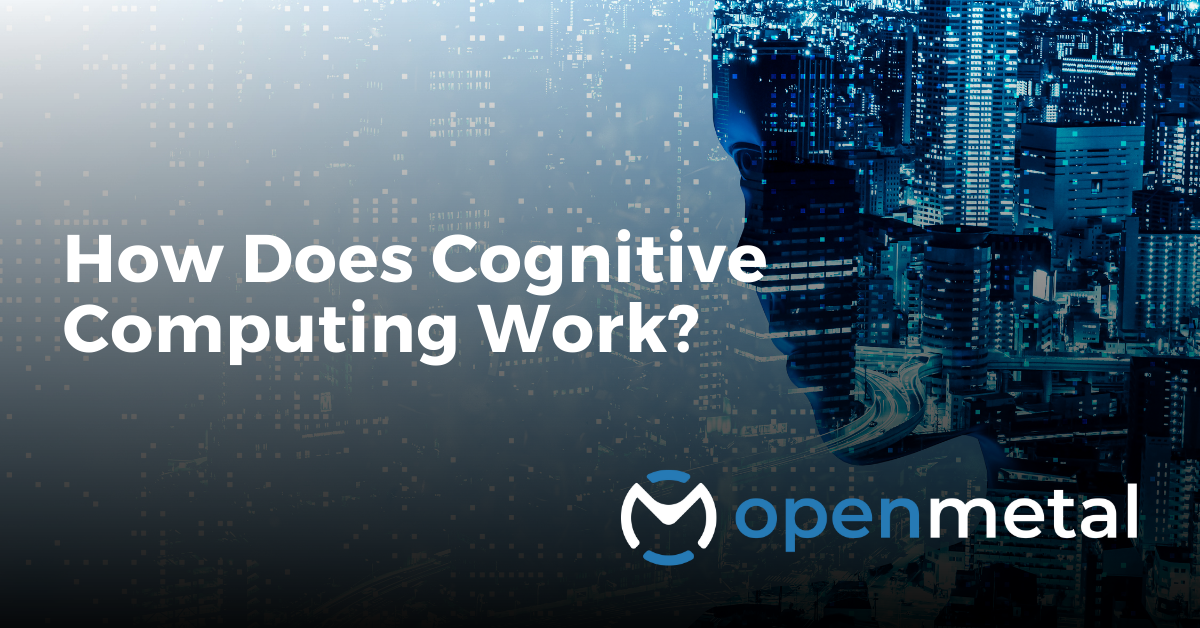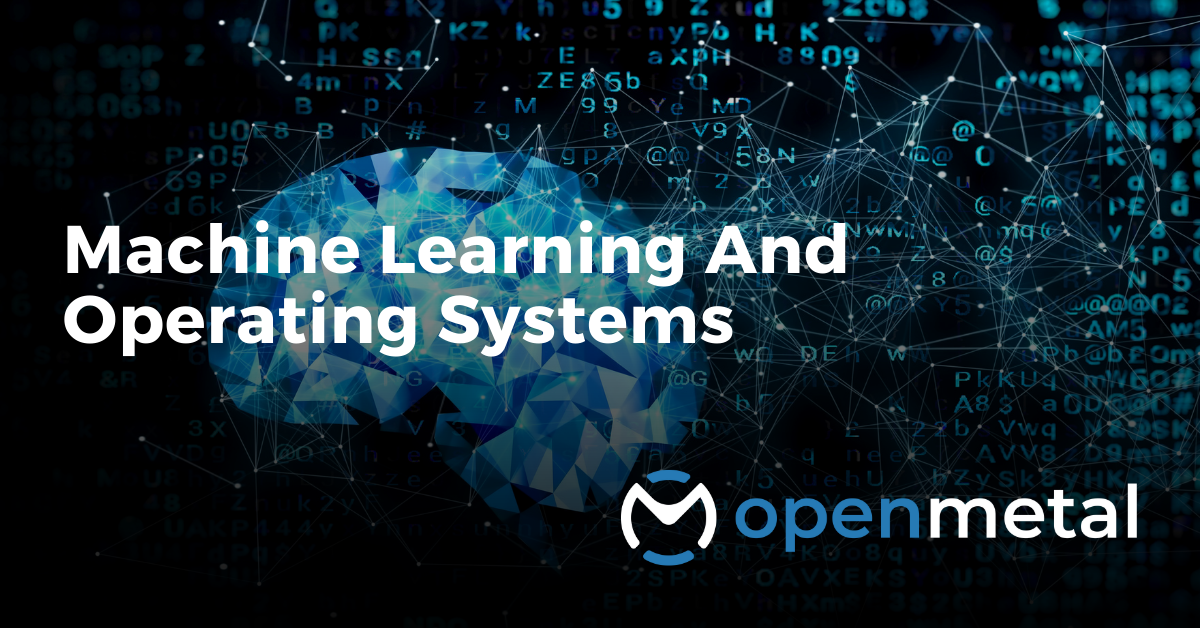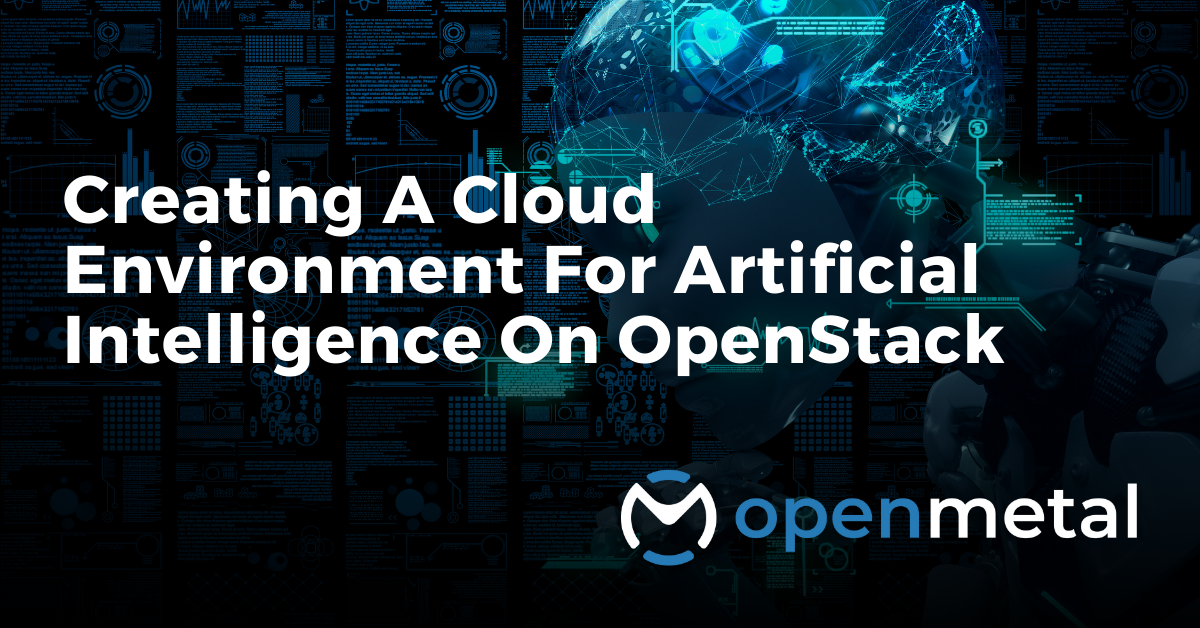Introduction: AI In The Cloud
Artificial intelligence (AI) has fascinated the world for decades. I may have joined the tech industry less than a year ago, but more than a decade ago I immersed myself in the works of Alan Turing and those who have contributed since his time to advance AI to what it is today. AI continues to transform the way we live, learn, and work, and it’s become an integral part of modern-day organizations. AI technology is now used in various fields, including healthcare, marketing, finance, transportation, and many more.
However, developing, testing, and managing AI systems can be complex and require significant resources including large amounts of computing power, storage, and memory. AI systems are often built with sophisticated deep learning models that require heavy computational workloads. Additionally, the training and operation for AI require a lot of data. This is where cloud computing comes in handy, and OpenStack, an open source cloud computing platform, is one of the best choices for building and managing AI applications.
OpenStack is a powerful cloud computing platform that is backed by a vast community of developers who continuously update and improve the software. In this blog, we will discuss OpenStack projects and open source software that can be used to create a cloud environment that’s ideal for building, testing, and managing AI.
Creating An OpenStack Cloud Environment for AI
To create an OpenStack cloud environment for AI, you will first need an OpenStack installation. You can install OpenStack from scratch, use a pre-built solution such as OpenStack-Ansible, or use a hosted service.
Once you have an OpenStack cloud, you can then create the necessary virtual machines (VMs) for your AI applications. OpenStack enables you to create and manage virtual machines using various open source technologies, including KVM, QEMU, and Xen. The number of VMs you use and the size of those VMs will vary based on several factors including the size of the model, the quantity of training data, and the amount of traffic your program receives. While it may be tempting to use the internet as your training data, it will be time-consuming for your program to pull data and there’s no guaranteeing the quality of data your program will pull.
After creating your VMs, you will need to set up a networking infrastructure for your AI applications. Your network will be set up using the OpenStack project Neutron, which is a software-defined networking (SDN) platform. With Neutron, you can create and manage virtual networks and subnets, allowing you to separate your AI applications and allocate resources more efficiently. This way, you can ensure that your AI workloads are isolated from other workloads (such as web applications, database management, DevOps tools, and Analytics) in the cloud environment.
Another essential component of creating a cloud environment for AI is storage. Cinder is the OpenStack project that is responsible for block storage in your cloud. Cinder enables you to create and manage block storage volumes, allowing you to store large amounts of data and access it quickly. This feature is particularly useful for AI workloads, as AI systems require large amounts of data to be stored and accessed quickly during training and operation.
By now, you’ve probably seen the notifications from ChatGPT that there’s high demand and you need to wait while they scale. Scalability is an important consideration when building a cloud environment for AI. This is one of the main reasons why you should not have an entirely on-premise solution for your AI program. When demand is high and you need to scale, you will be limited by available hardware. This can result in slower response times or system crashes. OpenStack’s modular architecture makes it easy to add more resources as your AI workloads grow. And using OpenStack projects like AODH and Ceilometer allows you to set up a monitoring system that will notify you when you are getting close to your hardware limitations and need to add additional nodes to your cloud. You can even automate this process so it’s a seamless experience for your users.
OpenStack Projects for AI
When building an OpenStack cloud environment, you choose what OpenStack projects you want in your cloud. You have to add each project and configure it to work with the other projects in your cloud as needed. Apart from the core computing, networking, and storage, other OpenStack projects can make your OpenStack cloud environment ideal for building and managing AI applications. Let’s take a look at some of these projects:
Sahara
The Sahara project offers OpenStack users an easy and streamlined method to set up and manage data processing frameworks. This project simplifies the provisioning process of various data processing technologies, making it easy to deploy Hadoop, Spark, and other big data processing tools on OpenStack.
With Sahara, users can easily spin up clusters and manage them through a user-friendly interface, without needing to possess extensive knowledge of the underlying infrastructure. Hadoop is not designed specifically for AI but it is a distributed data processing framework used in many AI applications such as Natural Language Processing, Computer Vision, and Machine Learning. This makes Sahara a critical project for AI developers. Sahara enables you to deploy and manage Hadoop clusters with ease, allowing you to process large amounts of data quickly.
Magnum
Magnum enables you to deploy and manage container orchestration engines such as Kubernetes, Swarm, and Mesos on OpenStack. Containers are becoming increasingly popular in AI, as they provide a lightweight and efficient way to package and deploy AI applications. Containers also help create a level of isolation between various components in your application and they make it easier to set up and manage development environments. Magnum also provides additional functionality such as load balancers, networking, and security features, to make it easier to deploy container-based applications at scale on OpenStack.
Zun
Zun is another OpenStack project that provides a container management service for OpenStack. Zun enables you to deploy and manage containers on OpenStack with an easy-to-use interface. Zun provides a simple API for managing containers, including features such as container isolation, security, and networking. Unlike Magnum, Zun does not require an external container orchestration engine like Kubernetes or Swarm but instead provides a simple way to run and manage containers directly on OpenStack.
Ironic
Ironic is an OpenStack project that enables you to deploy and manage bare metal servers on OpenStack. Bare metal clusters consist of multiple bare metal servers working together to provide high-performance computing power for data-intensive workloads like machine learning and deep learning. They provide more processing power and faster speeds compared to virtual machines. Ironic makes it easy to deploy and manage bare metal servers on OpenStack, allowing you to take full advantage of their capabilities.
Open Source Software for AI
In addition to OpenStack projects, several open source software solutions can be used in conjunction with OpenStack to create a powerful AI environment. Let’s take a look at some of these solutions:
TensorFlow
TensorFlow is an open source software library developed by Google for building and training machine learning models. It is designed to allow developers to create and train neural networks for a variety of tasks, including image and speech recognition, natural language processing, and recommendation systems. TensorFlow uses a data flow graph to represent the computations that occur during the training of a neural network. This graph consists of a set of nodes that represent mathematical operations and a set of edges that represent the data that flows between these operations. By using TensorFlow with OpenStack, you can create a powerful AI environment that enables you to build, train, and deploy machine learning models quickly and efficiently.
PyTorch
PyTorch is another open source machine learning library that’s becoming increasingly popular in AI applications. PyTorch is designed to be more user-friendly than TensorFlow. PyTorch is designed to be efficient and scalable, and it supports both GPU and CPU acceleration, which enables it to handle large datasets and complex neural network architectures. PyTorch can be easily integrated with OpenStack, allowing you to create a powerful AI environment that’s easy to use.
Jupyter
Jupyter is an open source web application that enables you to create and share documents that contain live code, equations, visualizations, and narrative text. Jupyter is commonly used for data exploration and manipulation, prototyping and developing machine learning models, and sharing results and analyses with collaborators. It also supports a wide range of programming languages, including Python, R, and Julia, making it a versatile tool for a range of data science and AI tasks. Jupyter can be easily integrated with OpenStack, allowing you to create and share notebooks in a secure and efficient manner.
Apache Spark
Apache Spark is an open source distributed computing system. It can scale horizontally across large clusters of machines, which enables it to handle massive datasets and perform complex computations quickly and efficiently. Not only can Spark be easily integrated with OpenStack, it’s interoperable with other popular AI tools and frameworks, such as TensorFlow and PyTorch.
Conclusion
OpenStack is a powerful cloud computing platform that’s ideal for building and managing AI applications. By using OpenStack projects and open source software, you can create a powerful AI environment that enables you to build, train, and deploy machine learning models quickly and efficiently. So, if you’re looking to build an AI environment, be sure to consider OpenStack and the open source solutions that can be used with it.
More From OpenMetal

How Does Cognitive Computing Work?
In this blog:
- What Is Cognitive Computing?
- AI And Cognitive Computing
- How Does Cognitive Computing Work?
- Features Of Cognitive Systems

What Are The Advantages Of Using OpenStack To Create A Cloud Environment?
In this blog:
- Quantified Savings
- Control
- Kubernetes Integration
- Speed and Reliability

Machine Learning And Operating Systems
In this blog post:
- Which OS Is Best For ML?
- Open Source vs Proprietary
- ML: Linux vs Windows
- Everyday uses of ML and OS
- The Best OS for ML
Test Drive
For eligible organizations, individuals, and Open Source Partners, Private Cloud Cores are free to trial. Apply today to qualify.
Subscribe
Join our community! Subscribe to our newsletter to get the latest company news, product releases, updates from partners, and more.



































